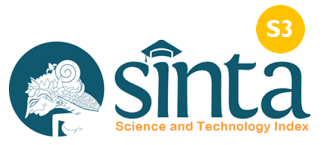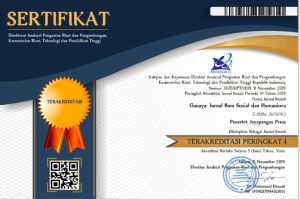Bentuk Satuan Lingual dan Nilai Pendidikan Dalam Kearifan Lokal Pasatotang Suku Samawa
DOI:
https://doi.org/10.37329/cetta.v8i3.4294Keywords:
Linguistic Units, Educational Values, Pasatotang, Samawa Ethnic GroupAbstract
Language, culture, and education are interrelated in shaping the character of society. Language is the main tool for passing on culture and educational values, while culture shapes values in education. Education plays a role in preserving language and culture through teaching history, literature, and local values. This study aims to describe the form of lingual units and educational values in the local wisdom of the Pasatotang of the Samawa Tribe on Sumbawa Island, West Nusa Tenggara. Pasatotang, which means advice, is an oral tradition that contains moral messages, manners, and profound life values. This study combines structural linguistics and ethnolinguistic approaches to explore the language structure and cultural meaning contained in pasatotang, which plays a role in shaping the character and social behavior of society. The research data were obtained from the book Pasatotang by LATS Anorawi (2016), which consists of words, phrases, and sentences that function as lingual units in this tradition. Data collection methods include literature study techniques, reading techniques, and note-taking techniques to interpret lingual forms and educational values in order to achieve the desired data with instruments in the form of table data analysis guidelines. Data analysis in this study was conducted by systematically reviewing documents through documentation techniques. The collected data were reduced, classified into themes and codes, then interpreted and presented in the form of narratives, tables, or images to illustrate the meaning behind the speech and support the research findings. This study found that the local wisdom of Pasatotang of the Samawa tribe contains lingual units in the form of words, clauses, and discourses, and contains religious, moral, and social educational values that form noble and characterful characters that are associated with the theory of Ki Hadjar Dewantara.
References
Alwi, H., Dardjowidjojo, S., Lapoliwa, H., & Moeliono, A. M. (1998). Tata Bahasa Baku Bahasa Indonesia. Jakarta: Balai Pustaka.
Burhanuddin, B., Mahsun, M., Sukri, S., Mahyuni, M., & Saharuddin, S. (2020). Satuan Lingual {Ka} dalam Bahasa Sumbawa Dialek Jereweh. Mabasan, 14(2), 315-328.
Chaer, A. (2007). Linguistik Umum. Jakarta: Rineka Cipta.
Chaer, A. (2008). Morfologi Bahasa Indonesia. Jakarta: Reneka Cipta.
Chaer, A. (2015). Sintaksis Bahasa Indonesia (Pendekatan Proses). Jakarta: Rineka Cipta.
Dewantara, K. H. (1997). Pertama: Pendidikan. Yogyakarta: Majelis Luhur Persatuan Taman Siswa.
Endraswara, S. (2010). Falsafah Hidup Jawa, Menggali Mutiara Kebijakan dari Intisari. Yogyakarta: Media Pressindo.
Fatmaira, Z. (2022). Nilai Pendidikan Dalam Novel Rantau 1 Muara Karya A. Fuaddi. Sintaks: Jurnal Bahasa & Sastra Indonesia, 2(2), 1-6.
Hawa, E. E., Wildan, D., & Komariah, S. (2024). Lawas Sakeco: Menggali Nilai-Nilai Etnopedagogik Dalam Pembelajaran Sosiologi. Pendas: Jurnal Ilmiah Pendidikan Dasar, 9(2), 4465-4479.
Hermansyah, W. (2016). Terminologi Rumah Adat dalam Loka Sumbawa: Sebuah Tinjauan Antropolinguistik. Retorika: Jurnal Ilmu Bahasa, 2(2), 293-312.
Koentjaraningrat. (2002). Kebudayaan, Mentalitas dan Pembangunan. Jakarta: Gramedia Pustaka Utama.
Koentjaraningrat. (2009). Pengantar Ilmu Antropologi. Jakarta: Rineka Cipta.
Liliweri, A. (2002). Makna Budaya dalam Komunikasi Antarbudaya. Yogyakarta: LKiS.
Lubis, M. (2008). Evaluasi Pendidikan Nilai. Yogyakarta: Pustaka Pelajar.
Mahsun. (2005). Konsep Ruang Dalam Bahasa Mbojo dan Kaitannya dengan Cara Pandang Masyarakat Penuturnya. Jurnal Linguistik Indonesia, 23(1), 81-88.
Mawarni, H. (2022). Analisis Fungsi dan Makna Lawas (Puisi Tradisional) Masyarakat Kabupaten Sumbawa Nusa Tenggarra Barat. CENDEKIA: Jurnal Ilmu Pengetahuan, 2(2), 133-142.
Muthoifin, M. (2015). Pemikiran pendidikan multikultural Ki Hadjar Dewantara. Intizar, 21(2), 299-320.
Ramlan, M. (1997). Morfologi: Suatu Tinjauan Deskriptif. Yogyakarta: CV. Karyono.
Rehulina, R., Rokhman, F., & Mardikantoro, H. B. (2020). The Lingual Unit of Batak Simalungun Traditional Wedding Ceremony in The Medan of Etnolinguistic Study. Seloka: Jurnal Pendidikan Bahasa dan Sastra Indonesia, 9(1), 18-27.
Sari, E. R. (2021). Idealitas Mata Pelajaran Sains di SD Dan Penerapannya Dalam Agama Islam Di Kelas IV SDN 4 Rejang Lebong. Doctoral dissertation, IAIN CURUP).
Suriasumantri, J. S. (1996). Filsafat Ilmu: Sebuah Pengantar Populer. Jakarta: Pustaka Sinar Harapan.
Zulkarnain, A. (2015). Tradisi & Adat Istiadat Samawa (Sumbawa). Yogyakarta: Ombak.
Downloads
Published
How to Cite
Issue
Section
License
Copyright (c) 2025 Nanda Hafizhah Rahmani, Mahsun Mahsun, Burhanuddin Burhanuddin, Saharudin Saharudin

This work is licensed under a Creative Commons Attribution-ShareAlike 4.0 International License.
An author who publishes in the Cetta : Jurnal Ilmu Pendidikan agrees to the following terms:
- Author retains the copyright and grants the journal the right of first publication of the work simultaneously licensed under the Creative Commons Attribution-ShareAlike 4.0 License that allows others to share the work with an acknowledgement of the work's authorship and initial publication in this journal
- Author is able to enter into separate, additional contractual arrangements for the non-exclusive distribution of the journal's published version of the work (e.g., post it to an institutional repository or publish it in a book) with the acknowledgement of its initial publication in this journal.
- Author is permitted and encouraged to post his/her work online (e.g., in institutional repositories or on their website) prior to and during the submission process, as it can lead to productive exchanges, as well as earlier and greater citation of the published work (See The Effect of Open Access).
Read more about the Creative Commons Attribution-ShareAlike 4.0 Licence here: https://creativecommons.org/licenses/by-sa/4.0/.





